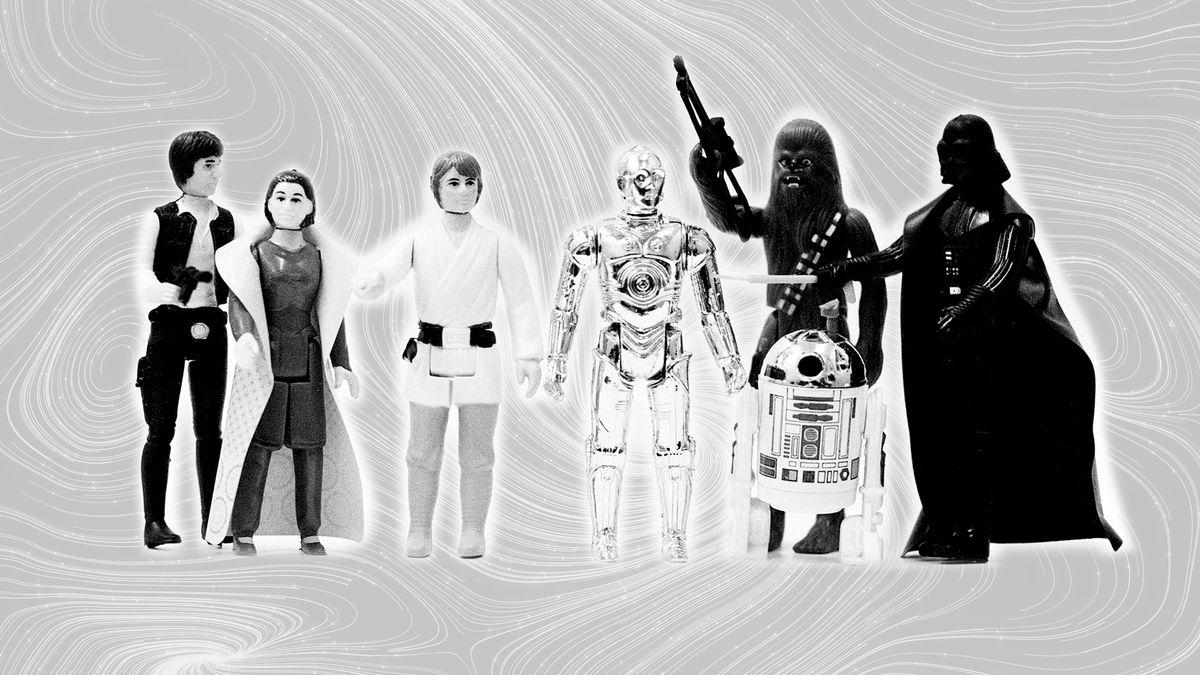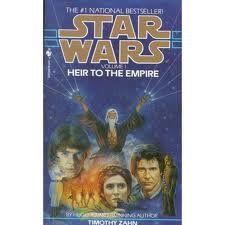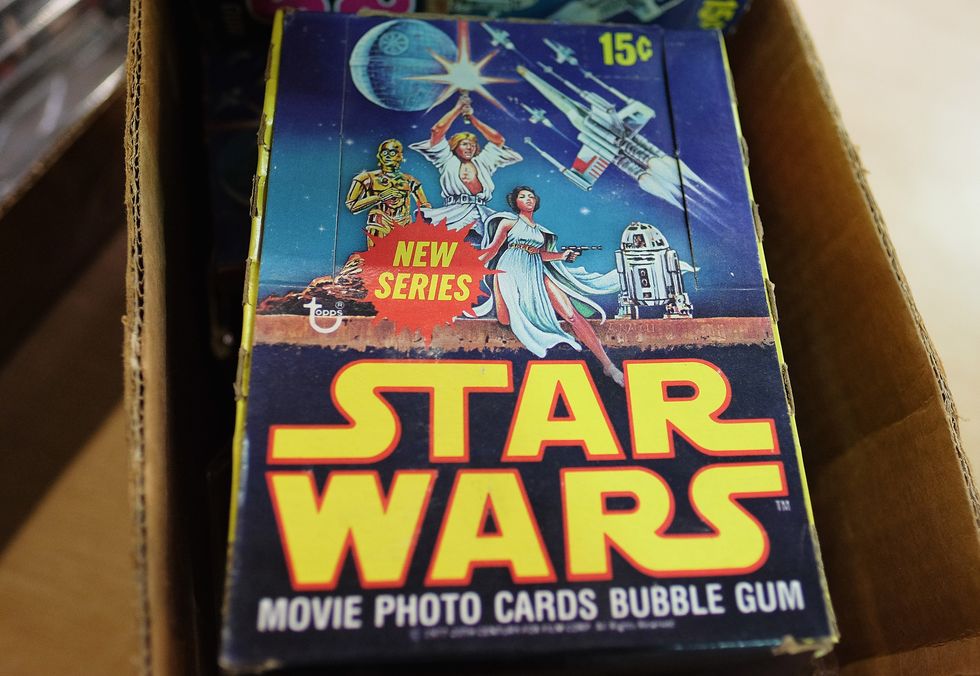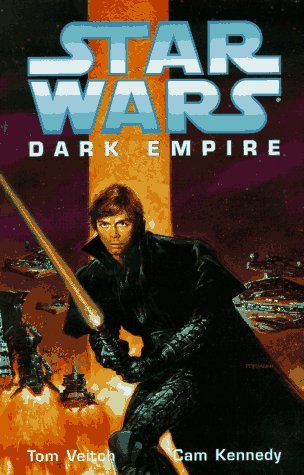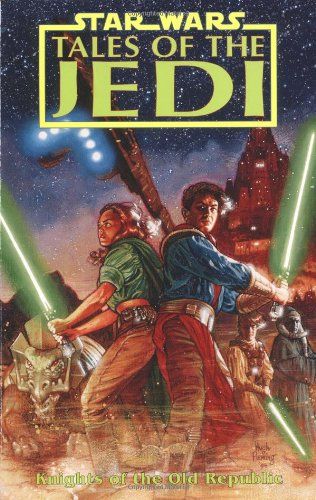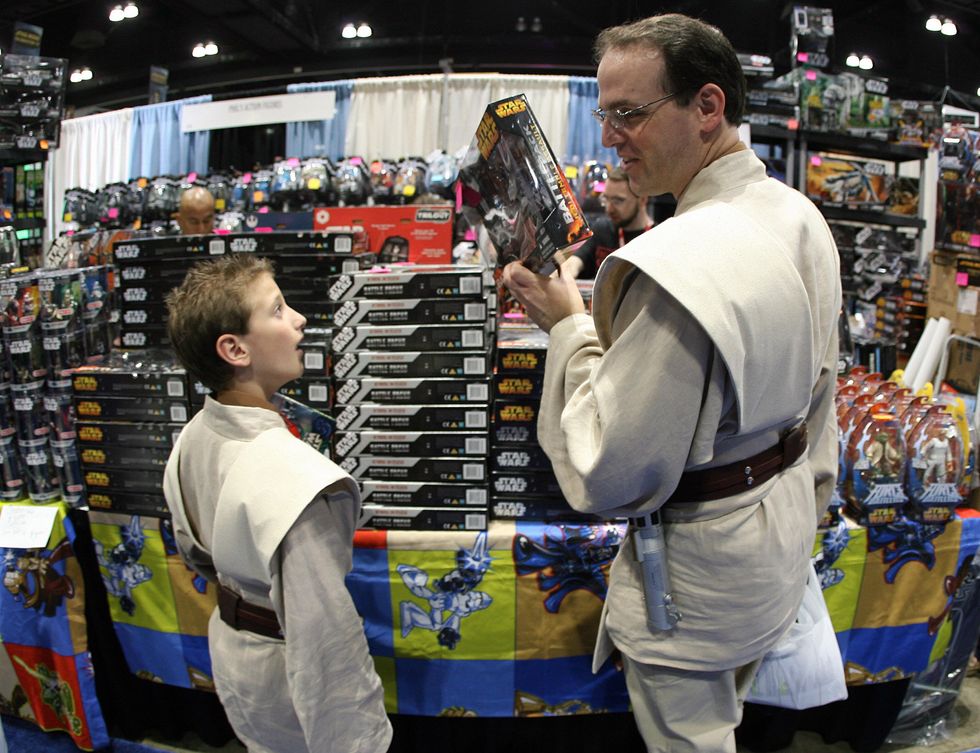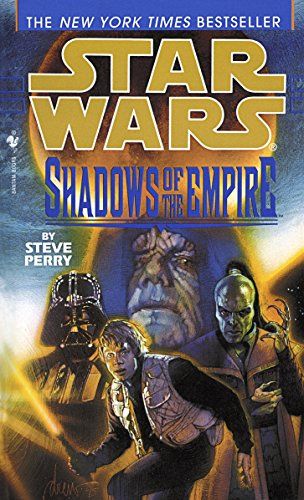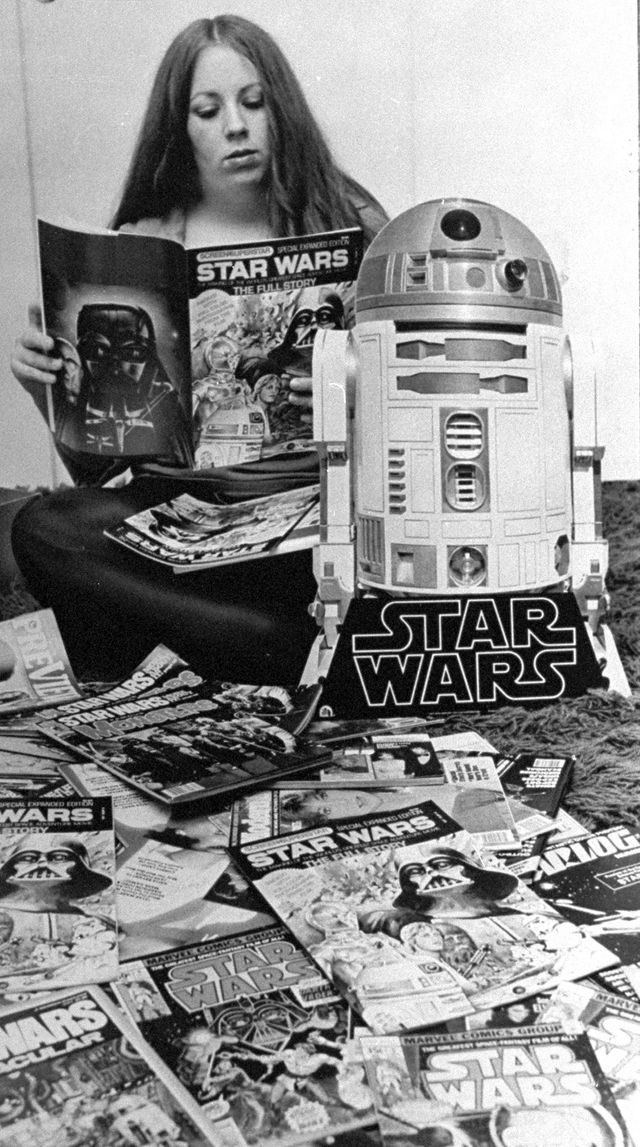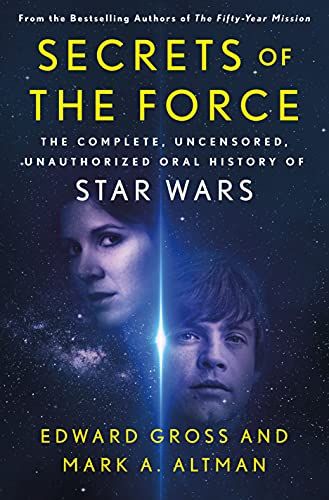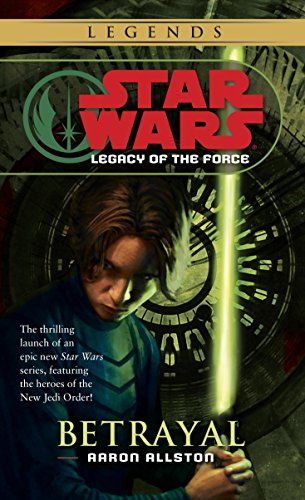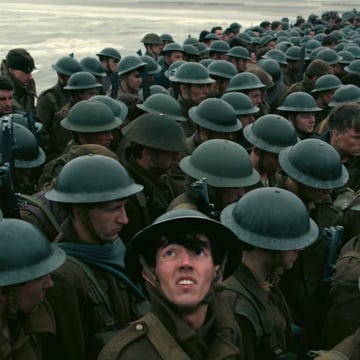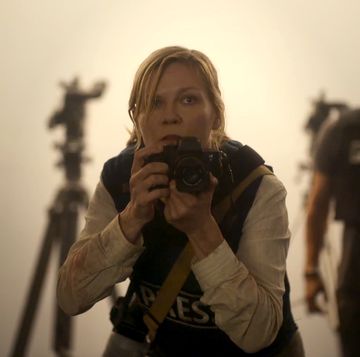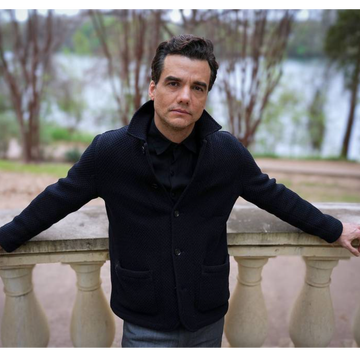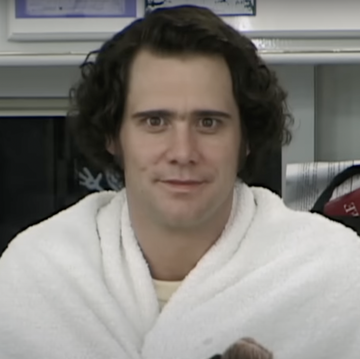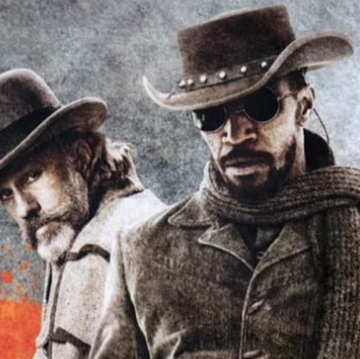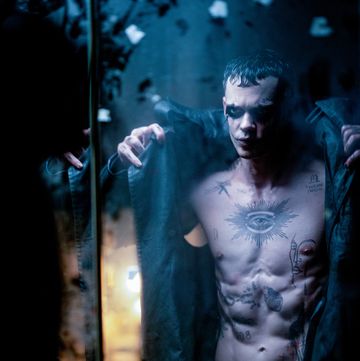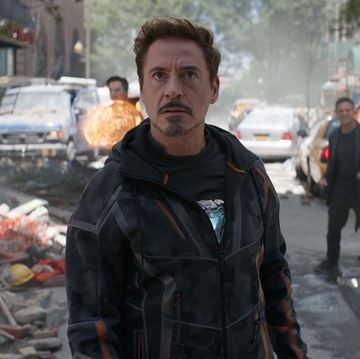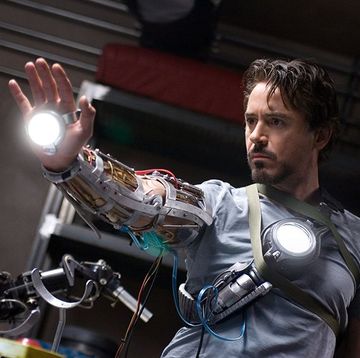The word “renaissance” would seem superfluous when it comes to the Star Wars franchise, yet as it turned out, that was exactly what was needed in the aftermath of Return of the Jedi. Interest in all things Star Wars seemed to rapidly cool off with the saga apparently wrapping up with the Ewoks and Droids animated series, the pair of live-action Ewok TV movies, and the emergence of new blockbuster franchises like Tim Burton’s Batman arriving on the scene. Howard Roffman, who at that time was the vice president of licensing for Lucasfilm, Ltd., having moved into that position from Lucasfilm general counsel, recognized along with George Lucas himself that while the brand had enchanted hundreds of millions of people—and not just children—it needed to be nurtured and developed into an enduring classic a la The Wizard of Oz, or risk going the way of Flash Gordon itself.
Howard Roffman (former vice president of licensing, Lucasfilm): When I moved to licensing in 1986, Star Wars merchandise was at a virtual standstill. We had gone through this tremendous period with Star Wars. When it was new, it was a mass market phenomenon, and toys were by far the majority of the product being sold and revenues being generated. Things like that normally have a limited life span and the question always is, is there something about them that makes them more enduring, or are they a one-shot phenomenon? But in 1985, the toys were over. You couldn’t even mention Star Wars to retailers. There simply wasn’t a lot happening.
Brian Volk-Weiss (executive producer, The Toys That Made Us): Things were dead for two reasons, one of them 75 percent responsible, the other 25 percent. It was 25 percent dead because the audience had become smaller and the demand had diminished. Basically, everybody was into Star Wars up until about six months after Return of the Jedi. A year later, it was just hardcore fans, so instead of having a market base of a hundred million people, you had a market base of fifteen to twenty million people. The 75 percent of it is that George didn’t want to do anything.
George Lucas (creator, the Star Wars franchise): I ran out of energy to do it. Once you have done it a couple of times, then the thrill of it wears off and you really want to get into different territory.
Joe Bongiorno (webmaster, starwarstimeline.net): While Star Wars was not quite the “dead” property that many claim, it was getting close. Four years earlier the Marvel Droids and Ewoks comic book series that told new stories based on the two animated series (both of which had ceased production the year prior) ended, but West End Games had a thriving Star Wars role-playing game that started in that same year in 1987. Through various sourcebooks, supplements, and role-playing adventures, West End Games provided names, races, planets, and backstories for everything seen in the films, as well as new stories and characters set in the universe.
Brian Volk-Weiss: At the time, Kenner had made a gigantic proposal to Lucas and Lucasfilm, and had made mockups of vehicles and extra characters and all of it based on the Clone Wars, and this was before the TV series. Kenner on their own initiative made a run at figuring out what that line of dialogue from A New Hope about the Clone Wars was all about and presented it to George, and George declined it. The way the contract worked was Kenner was entitled to do the toys and merchandise for anything based on the movies or TV shows, but if Lucas wasn’t making movies or TV shows, they couldn’t really do anything.
Jonathan Wilkins (editor, Star Wars Insider, 2009–2017): There was that period where Star Wars was so intense, and then about ’84 or ’85, there was just this massive drop-off. There were no new films or projects coming. I just remember it being a sudden thing—kids around my neighborhood, we all moved on to Masters of the Universe. I’m so sorry to say that. Then Star Wars had a sort of resurgence in the early nineties, and they had those action figures where Luke Skywalker had the body-building look. I didn’t collect those.
Bill Slavicsek (game designer, West End Games): West End Games’ Star Wars Role-playing Game line was actually the first thing to show Lucasfilm Licensing that they still had a viable property even without new movies. I was at WEG when we were awarded the license. This was late 1986. The movies were finished. The novels were done. The Marvel Comics line and Kenner toys were winding down. The following year, for the tenth anniversary of the original film, there were only two new Star Wars offerings: Star Tours, which opened in Disneyland, and The Star Wars Role-playing Game from West End Games that debuted in October 1987.
Bill George (visual effects supervisor, Industrial Light & Magic): I started working on the reboot of Star Tours in 2008, and have ended up working a lot of WDI—Walt Disney Imagineering—since then. It was a project I really thought was interesting, mostly because it was in stereoscopic 3D, but I have completely fallen in love with working on theme park rides. Because it takes the challenges of production, 2D production, and takes it into this whole other world where you have to pay attention to so many different things. It’s compressed, it’s usually in high resolution, you have a story to get across, you usually have a simulator that’s going, you got the stereo. What I call the three S’s. They’ve got this complex melody that is really, really challenging and fun. And then we’ve got the branching storyline with Star Tours, where we’ve got the opening, a detour, the transmission, and an ending—and those can all fit together in different combinations. So that’s really fun.
Joe Bongiorno: Another important thing that happened was in 1990, when the original trilogy was packaged together for the first time on home video by CBS/FOX, which introduced and reintroduced a generation to the saga who hadn’t previously owned or even seen them. While this wasn’t the first time Star Wars had been on video, it’s significant because the eighties’ releases were cost prohibitive. A VHS tape from that era could run around $80 each. This same year saw the releases of the new Ewok films and various episodes of the Droids and Ewoks animated television series, ramping up interest in what was soon to be called the Expanded Universe. In 1992, the first widescreen (letterbox) VHS set was released in a gorgeous box set boasting a lenticular hologram cover. Derived from the laser discs that had debuted two years prior, it introduced the concept of widescreen as a preferable format, not just for the theatrical experience, but for home viewing. It was an exciting release and the first of many to come.
Brian Volk-Weiss: The first new toy in about ten years was in 1993 with the Luke Skywalker and Star Wars Bend-Ems, and they were garbage. But I bought them all, because there hadn’t been a Star Wars story in ten years. I would argue—and this is not fact, just my opinion—is that the reason Kenner fell to Hasbro in the first place was because George didn’t want to do anything else. With the Bend-Ems, I can’t stress this enough: they’re possibly the nastiest, grossest things toy-related that Star Wars ever did, but they flew off the shelf. One of the things about Lucas is that he was always testing things. Like, Howard the Duck was a gigantic test for animatronic technology. The Phantom Menace, and Lucas says it himself on the film’s documentary, was a giant test to do a photorealistic character that ILM would then be able to make for other companies and other movies. So, again, the Bend-Ems were largely a test. Lucas hadn’t approved a new toy in ten years and he approved it just to get some sales data. I don’t know if he intentionally approved the worst toy to say, “Well, if they buy this garbage, imagine what they’d buy if it was good.” Now in case you can’t tell already, I have a sweet spot in my heart for the Bend-Ems, but they’re also an irrelevant piece of history that’s not as sexy to talk about as the Timothy Zahn novels or West End Games.
Howard Roffman: With the success of the West End Games, Lucasfilm began to formulate a plan that would take the franchise into new territory, which would not only include games, but novels and comic books as well. It was not an attempt to repeat what had been done before when Star Wars was hot in 1977, and we slowly began building it. It started with the novel, Timothy Zahn’s Heir to the Empire, the first in a trilogy, which like many of the novels became bestsellers.
Bill Slavicsek: By the time Lucasfilm, Ltd., decided to expand back into novels and comics, WEG’s products were provided to the other licensees as reference material. Tim Zahn tells the story of how he received a box full of game books when he started writing Heir to the Empire. At first, he was a little insulted, but as he dug into the material we had produced, he saw that there was a wealth of material he wouldn’t have to create, including ships, weapons, and aliens. That allowed him to really focus on his story.
Joe Bongiorno: Howard Roffman correctly ascertained that one of the first things to turn everything around for Star Wars was the Timothy Zahn novel. He would know, as he was the one who proposed the idea to Lucas, along with Lucy Wilson, Lucasfilm’s finance director and one of Lucas’s first employees, who literally typed the screenplay of the first Star Wars film in George’s house. Wilson had been longing to see Star Wars return as the publishing venture it had once been, and knew it could be even greater. Although former publisher Del Rey was no longer interested, not seeing the financial value in it, serendipitously, the head of Bantam-Spectra, Lou Aronica, was very interested, having just sent a proposal to them.
Howard Roffman: One of the things obvious about Star Wars was that, like Star Trek, it’s a very rich universe with very well-defined characters and situations and creatures and politics. It was very fertile area to let gifted science fiction writers come and play in. Timothy Zahn’s first book turned out to be a smashing validation, if you will, of the theory that people would be interested in good new fiction based on the Star Wars universe.
Joe Bongiorno: Clearly the Force was at work. Star Wars was meant to expand into a literary saga. The idea was to set new stories after the events of Return of the Jedi. Lucas liked the idea; after all, he was the one who set up Carol Titelman and her team to oversee the expansion of his saga in the pages of Marvel’s Star Wars comics, newspaper strips, and Del Rey novels. However, it had now been five years after his last film and with no new films on the immediate horizon, he had doubts it would sell. Nevertheless, he green-lit the idea, saying that the time period before A New Hope was to be left alone, since if he did ever return to Star Wars on film, it would be in the form of prequels.
Tom Dupree (editor, Bantam Books): The success of the novel surprised everybody. Heir to the Empire hit number one on the New York Times bestseller list, which was almost unheard of for a science fiction novel. We were stunned to hear stories about customers at bookstores helping clerks open boxes to find the books. Also, a key difference between our program then and, say, the Star Trek program is that Star Trek is episodic, while ours was part of a larger mega-story. In a typical Trek novel, everything’s okay at the beginning, there’s a problem, they fix it, and then everything is okay at the end—just like an episode of the TV show. We were making our stories work together in the larger Star Wars universe, so if Han and Leia get married in Zahn’s book and you write a book that happens after that, they are married. Each publication added a little bit to the mythology.
Timothy Zahn (author, Heir to the Empire, Dark Force Rising, The Last Command): When I got the news that I would be writing the first new Star Wars adventures since Return of the Jedi, my reaction was, “Wow” and, then, “Argh!” I had to do something that felt like Star Wars, but wasn’t the same thing as the movies. Part of my goal was to give the feeling of a real universe, which is what George Lucas did with the films. Part of that is the political aspect. Bear in mind that I had a lot more room in three books than Lucas did in the movies, so I could have a lot of exposition. I could do things beneath the surface. In a movie, everything has to be visual or in dialogue. I realized that since it was set about five years after the last movie, in this case the Rebel Alliance had to create a government. That’s not as easy as people like to think. I wanted to get a feel for some of that challenge without letting it take over the whole book.
Joe Bongiorno: In Heir to the Empire, Zahn eschewed the less popular aspects of Return of the Jedi to focus on a more adult-oriented story, careful to capture the voices of Luke, Han, and Leia as well as to introduce readers to memorable new characters in the form of the still famous Grand Admiral Thrawn (who, along with the Noghri Rukh, would years later transition to the Star Wars: Rebels animated series and perhaps future live-action TV shows). The Emperor’s Hand, Mara Jade, would go on to significant fame: starting out as an assassin intended to kill Luke Skywalker, she would after many years go on to become his wife, and the mother of his son Ben. Zahn’s story was compelling and epic, adding into the mix a mad Jedi named Jorus C’baoth who was a wild card, adding to the edge-of-your-seat tension brought on by Thrawn’s meticulous, Machiavellian, Sherlockian maneuvers.
Timothy Zahn: When I was developing Thrawn, I wanted someone the reader could understand, someone who would be interesting and someone I could enjoy writing about for three books. In the back of my mind was the original Star Trek episode “Balance of Terror,” the first one with the Romulans, and the Romulan commander’s last line to Kirk was, “In another reality, we might have been friends.” I wanted to put some of that into Thrawn—that in another reality this guy could have really kicked butt for the Rebellion. He understands his people. He understands how to be a leader.
Joe Bongiorno: Debuting in December 1991 was the first issue of a six-part comic book series by Tom Veitch and Cam Kennedy called Dark Empire, from Dark Horse Comics. With no shortage of momentous events, it featured the return of Emperor Palpatine in a cloned body, and Luke Skywalker going to the dark side in an attempt to defeat him. Released only six months after Heir to the Empire debuted, the films on VHS, the book series, and the comic book were a triple-punch knockout that solidified the return of Star Wars in a big way.
Peter Holmstrom (cohost, The Rebel & the Rogue podcast): The Dark Horse era of Star Wars was a really beautiful time. Every comics publisher in the world was vying for the rights—for obvious reasons—but George Lucas chose Dark Horse because, at the time, Dark Horse was one of the few independent publishers out there. This was before the Image [Comics] Revolution, and the explosion of small publishers. So George was mirroring what he did with NPR years before—supporting the little guy. Advocating for decentralization of the entertainment industry. And those years had some really creative stuff flow out. For many kids, those comics were Star Wars, just as much as the movies.
I know when Lucasfilm sold to Disney, the breakup with Dark Horse was not pleasant. Rumor was that before the sale occurred, there was a handshake agreement to say Dark Horse would keep their license to publish even after the sale, but Marvel would publish the new continuity of stories. Couple of years go by, and that deal goes away. Then the 20th Century Fox sale, and Dark Horse loses the Aliens, Predator, Buffy, Firefly licenses—suddenly their paydays aren’t looking so good anymore. The rich get richer and the poor get poorer.
Joe Bongiorno: When Zahn discovered Dark Empire, he was aghast at the idea of Palpatine’s return. Whether he generally disliked the idea, or worried that it might up- stage his Grand Admiral Thrawn, he contacted his publisher requesting that he ignore it, or that it be deemed a separate continuity. When he discovered Lucasfilm’s intent to establish a single canon across media, he refused to include mention of its events. In fairness to him, having to set Heir to the Empire after the very big events of Dark Empire would’ve necessitated a complete rewrite. So, not wanting to delay its publication, Bantam and Lucasfilm conceded to switch things up and place Dark Empire after the events of Zahn’s forthcoming trilogy. Apart from a few hiccups in Dark Empire that the editors missed (e.g., referencing the Rebellion instead of the New Republic), it worked well enough.
Blissfully unaware of the behind-the-scenes drama, audiences devoured the continuation of the Star Wars saga, which now branched out to new time periods and characters, including those set four thousand years in the past with the Tales of the Jedi series, also written by Tom Veitch and Kevin J. Anderson, who followed the Thrawn trilogy (as it’s now called) with his own excellent Jedi Academy series, building on Luke’s promise to Yoda to “pass on what you have learned,” tying it directly to the Tales of the Jedi arc being developed. Lucas was consulted about the ancient Jedi and Sith, as he was with several important aspects of the saga along the way.
Bantam-Spectra also took advantage of the desire for more Star Wars. Despite several missteps along the way (e.g. demanding too many rewrites of Margaret Weis’s Legacy of Doom novel and failing to publish Kenneth C. Flint’s [The] Heart of [the] Jedi), Bantam put out some excellent Star Wars stories by authors as diverse as Kathy Tyers, Barbara Hambly, Vonda McIntyre, Kristine Kathryn Rusch, and A. C. Crispin (including editors Carol Titelman, Lucy Wilson, Sue Rostoni, and Bantam’s Shelly Shapiro—who in their right mind would think that there wasn’t already female representation in Star Wars’ content creation?), as well as Kevin J. Anderson, Rebecca Moesta, Roger MacBride Allen, Michael Stackpole, Michael P. Kube-McDowell, John Whitman, and others.
Roger MacBride Allen (author, Corellian trilogy): I had been looking to a post-Imperial period in the Star Wars universe where the Empire had collapsed and there is chaos in spots. One of the things in the real world that I was interested in were the so-called “hot spots” around the world where civil wars were popping up because the authority imposed on the population is no longer there. Basically, the story was inspired by what happened in the former Yugoslavia and Soviet Union. It’s Bosnia in space. I also wanted to explore the character of Han Solo. I’ve always felt he was the most intriguing character, because he’s the most flawed. He was never the perfect knight in shining armor. Luke is very difficult to write for, because he’s so powerful and so perfect. It’s tough to come up with a problem that he can’t solve by waving the Force at it, while Han has to sort of muddle through like the rest of us.
Kevin J. Anderson (author, Jedi Academy series): My first concept was an Imperial Weapons Research Lab that is so secret that it’s locked away and doesn’t even know that the war is over, kind of like Japanese soldiers on islands after World War II. I didn’t want to do another one of those “last remnants of the Empire” ideas, which get tedious after a while. I thought a good way around it would be with people who are so isolated that they don’t even know Darth Vader is dead. Since I worked for many years in a government nuclear weapons research lab, it seemed natural to have a secret weapons station hidden within a cluster of black holes, something so remote that nobody can get in or out unless they have a specific hyperdrive route plan. These are the people who developed the Death Star, and now they’re working on something even more fun—a weapon that can blow up stars. The second plot has Luke Skywalker working to bring back the Jedi Knights. Having recognized the power of the Force in himself, Luke realizes there must be more potential Jedi out there. Obi-Wan Kenobi implied that everybody can learn how to use the Force if they have the right training. And it would seem like an obvious thing for Luke to want to bring the Jedi back.
Howard Roffman: With all of this, continuity was an important issue to us. We felt there had to be an integrity to the program or it’s not worth doing.
Joe Bongiorno: Into this environment came something rather unique, a multimedia cross- over event that would incorporate a novel, comic book series, video games, action figures, short stories, soundtrack, toys—pretty much everything except the film. It was called Shadows of the Empire.
Launched in 1996, just three years before the arrival of the first of the Star Wars prequels, The Phantom Menace, Shadows of the Empire established a storyline set between the events of The Empire Strikes Back and Return of the Jedi. The Shadows storyline revolves around the galactic underworld’s attempts to assassinate Luke Skywalker and get closer to the Emperor in order to take control of the Empire, as well as deal with feuding bounty hunters. The project involved the following components: a novel by Steve Perry; a video game for Nintendo 64 as well as computers; a six-part Dark Horse Comics series by John Wagner, Kilian Plunkett, and Hugh Fleming; a trading card series from Topps featuring art by the Brothers Hildebrandt, who created the famous one- sheet poster for the original Star Wars; the Mark Cotta Vaz trade paperback, Secrets of the Shadows of the Empire; and a soundtrack album composed by Joel McNeely.
“Prince Xizor, who knew?” remarks Eric McCormack’s Mark in the 1999 feature film Free Enterprise, in the toy aisle of a Manhattan Beach Toys “R” Us, which may be the only time this Shadows of the Empire character ever made it to the big screen.
Brian Volk-Weiss: This is a great example of the kind of things Lucas does that I feel he doesn’t get enough credit for. I’ve never heard of anyone else doing something like Shadows of the Empire in the history of original content, for lack of a better term. Lucas makes movies that are intentionally designed to have holes in them that need to be filled later. Think about it: Clone Wars and then Rebels were designed to fill in the holes between Episode II and Episode III. Shadows of the Empire was basically designed as a test to see how the fan base was doing. Do they still love us? But it was also designed to help keep the storytelling going. It was a multimedia play before the term even existed.
Bill Slavicsek: This project was one of Lucasfilm’s first attempts to create an event for Star Wars by utilizing all of the licensees they had at the time. I was no longer actively working on Star Wars during this period, so I only know what I saw and experienced as a fan. They brought together novels, comics, video games, toys, and the RPG to craft an event that took place across these different mediums. It certainly generated excitement at the time and added things to the canon that are still being used today, including the Black Sun criminal organization.
Peter Holmstrom: I don’t think people realize how revolutionary that was—the notion of cross-media storytelling. It had never been done before. There had always been tie-in material, but this was different. You could watch Friday the 13th: Part IV, for example, and not need to read the novelization to get it. Here you did. Novel, comics, video game, action figures, its very own soundtrack—each told a different angle to a larger story. That’s fantastic! Fans ate it up.
Steve Perry (author, Shadows of the Empire): Tom Dupree at Bantam had given me a movie tie-in, The Mask, to write. The money wasn’t great and there was a short deadline, so when I turned it in, he figured he owed me one. He offered Shadows of the Empire to me, if Lucasfilm thought I had the chops. Meanwhile, Mike Richardson, at Dark Horse, had me doing the first couple of Aliens novelizations based on their continuing graphic novels, and he bragged on me to Lucasfilm and sold them—Dark Horse was doing the Star Wars comics—so that’s how I wound up with the job.
Howard Roffman: We had been using three different media to spin new stories in the Star Wars universe and the fans were really enjoying them; it was all working really well. Even though we were paying a lot of attention to continuity so that they weren’t contradicting each other, it hit us: Wouldn’t it be interesting if they all complemented each other, so that we had all these media united into a single, galvanizing story? To do that, it had to be a very special story set in the time period of the original trilogy. We looked to the movies to give us our clue as to what would be interesting to explore in that time period. That’s where we came up with the idea of the underworld, the organized crime empire within the Star Wars universe. We glimpsed it in Empire, where Vader hires bounty hunters.
When we thought it through, it just got more and more interesting, because if there was a head of an organized crime world, he would most likely need to exercise great influence with the Emperor. So, suddenly you have a shadowy figure who is all-powerful, head of the immensely powerful criminal organization, and who has the ear of the head of the Empire. Naturally that person could be an ally of Darth Vader—or a political infighter. It’s more interesting to have him as a political infighter.
Steve Perry: I think Vader is more interesting in this book than he’d ever been before. I got to play with his motivations and reveal why he’s doing what he’s doing. I also had to show the transition of Luke from where he was in Empire to the beginning of Jedi, where he is a good enough Jedi to walk into Jabba’s palace unarmed and come out alive. I also had the chance to develop a new villain, Xizor, who had to be on par with Vader. I sat down with members of Lucasfilm and developed a history for the character and his Costa Nostra–like organization, Black Sun. He’s kind of like Marlon Brando in The Godfather, though more physically capable than Brando was in that movie. He wants to be the number-one man in the galaxy, but he’s about number three. Obviously he’s got a couple of major impediments in Vader and the Emperor in his efforts to get to the top. If you’ve seen the third movie, then I don’t think it’s ruining anything to say that he doesn’t quite make it to the top.
Howard Roffman: Shadows of the Empire also spawned a toy line, but we weren’t looking to turn the concept into a merchandising free-for-all. That was not the idea of Shadows. I saw it much more as a platform for a lot of creative people to express their love for Star Wars. I saw it as a better version of what we’d been doing all these years with books, comics, and games. As far as I’m concerned, if a product isn’t contributing something new and creative, then it’s not going to happen. You look at everything we were doing, where we were making extensions, they’re all areas that allow very gifted people to bring their own creativity to bear on the Star Wars universe.
Steve Perry: We had a big meeting at Skywalker Ranch, with all the players in the various departments. We had a general idea Lucasfilm wanted to explore the character of Xizor, and we went back and forth, all of us offering story ideas. I took notes, offered some characters—we couldn’t use Han, so I came up with a guy who was kind of like his wild younger brother, Dash Rendar. There were certain elements the various folk wanted—the game guys wanted a motorcycle chase, the comic book guys wanted to use Boba Fett. I went home, hammered out a long outline, and then everybody read that, made notes, and eventually signed off on it. It became the basis for the toys, game, comics, musical CD, etc. I wrote a draft of the novel based on that outline and we repeated that process on the draft. I did a rewrite, and that was my part of it.
Joe Bongiorno: It’s odd that despite the huge success of Shadows of the Empire, Bantam didn’t repeat. That would come after the license was snagged by Del Rey in 1999. Del Rey had produced seven excellent titles, Splinter of the Mind’s Eye and Han Solo and Lando Calrissian trilogies released in the seventies and eighties, and finally came to their senses, outbidding Bantam for the license when their contract expired. Now that they regained it, they took their own bold steps to push the universe forward, not only building titles around the prequel trilogy on the way, and especially The Clone Wars, but pushing the narrative forward into a sprawling multibook series that would have large consequences for the main cast, starting with the death of Chewbacca in the first book of the New Jedi Order series, Vector Prime. Well-written and fueled by controversy, it proved to be another big success. This series was followed by the excellent Legacy of the Force and Fate of the Jedi series, along with several unrelated single volumes.
Howard Roffman: The idea was that if we were going to bring Star Wars back as a classic, we had to give people something that adds value to the property. It’s not just putting the name on something in an effort to pump up a mass market success. Everything had to have a reason for being. You really needed to be sensitive to the quality demands of your audience. In everything we were doing, that was a big concern. And we approached toys very cautiously. We had no idea if you could sustain any kind of toy presence at mass market, because the two things that seem to drive toys very much are either television and movie exposure, or television advertising. What we learned is that there was a pretty big pent-up demand for Stars Wars in the toy category. Overall, there were two different goals. We wanted to treat Star Wars the way it deserved to be treated, preserving its status as a classic. That is what we were entrusted with, and it was a long-term goal regardless of whether there would be sequels or not. The other is making sure that everything would lead into the marketing of new films. It was an interesting challenge, because it’s combining something old and something new while continuing to make it relevant to people.
Meanwhile, there was an additional element that played an integral role in what would lead to the rebirth of Star Wars: ironically it was derived from another Lucasfilm franchise, the ABC 1992–93 television series The Young Indiana Jones Chronicles. That show took Harrison Ford’s character from the popular trilogy of feature films and told adventures of when he was a child (Corey Carrier) and a young adult (Sean Patrick Flannery). Shot all around the world with a huge budget, it revolutionized digital effects and, even more importantly, seemed to reignite Lucas’s passion for filmmaking.
By 1992, Lucas had become intensely interested in education and was developing interactive technology that would make it more interesting for young students to learn history and geography. He came up with an idea for an educational CD-ROM he called Walking Through Time with Indiana Jones, but he liked it so much that he decided to turn it into a television series, writing the story for the pilot episode and outlines for the rest of the series himself.
From Secrets of the Force by Mark A. Altman and Edward Gross. Copyright © 2021 by the authors and reprinted by permission of St. Martin’s Press.
